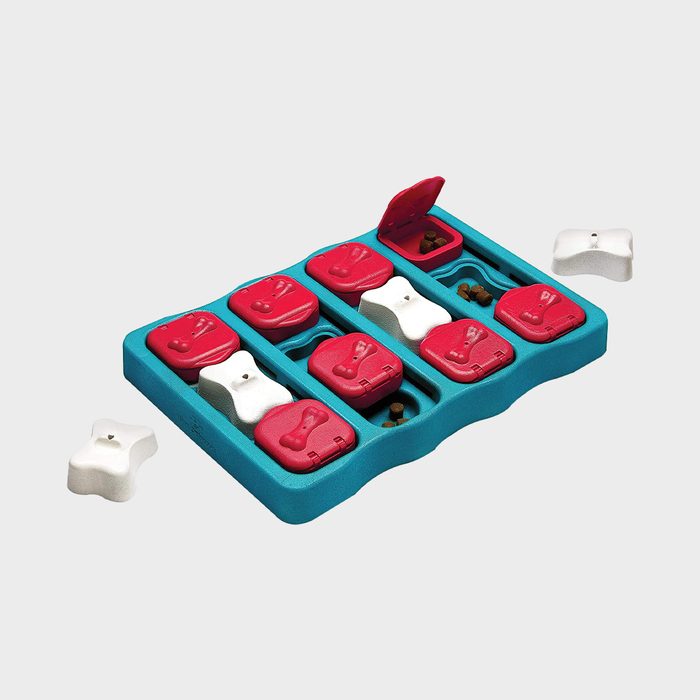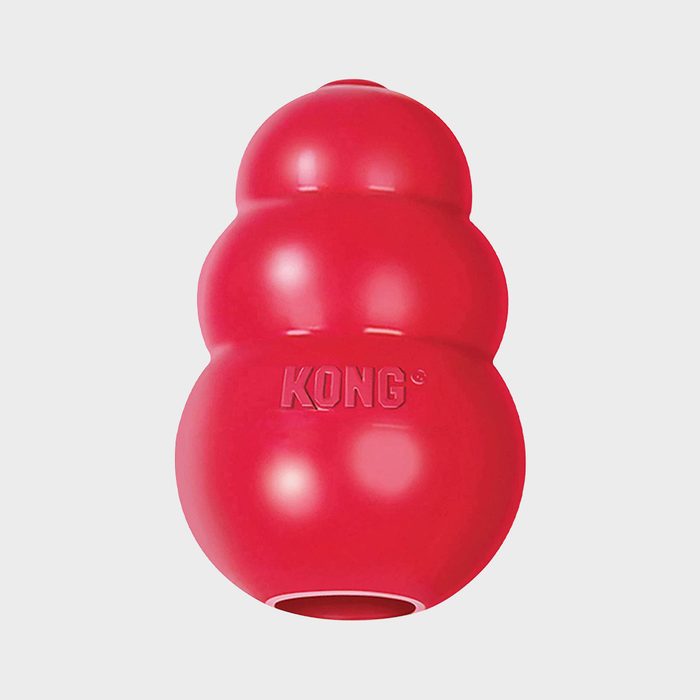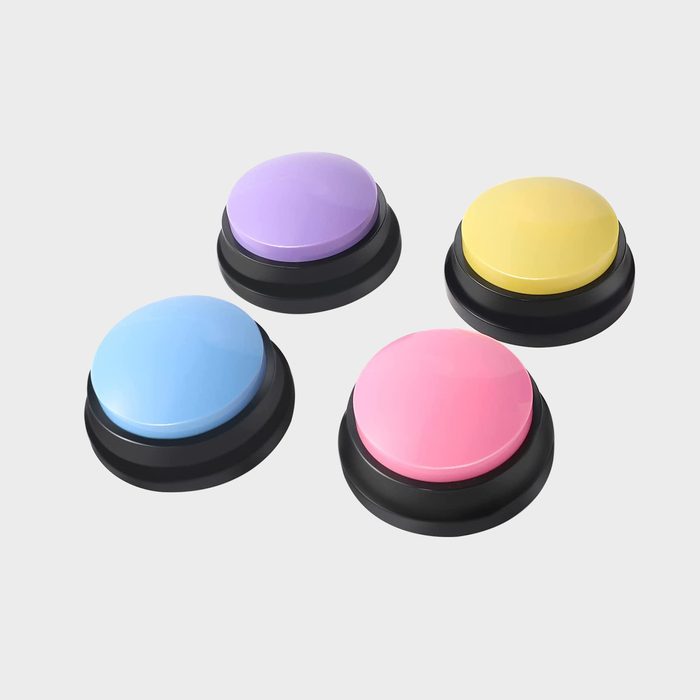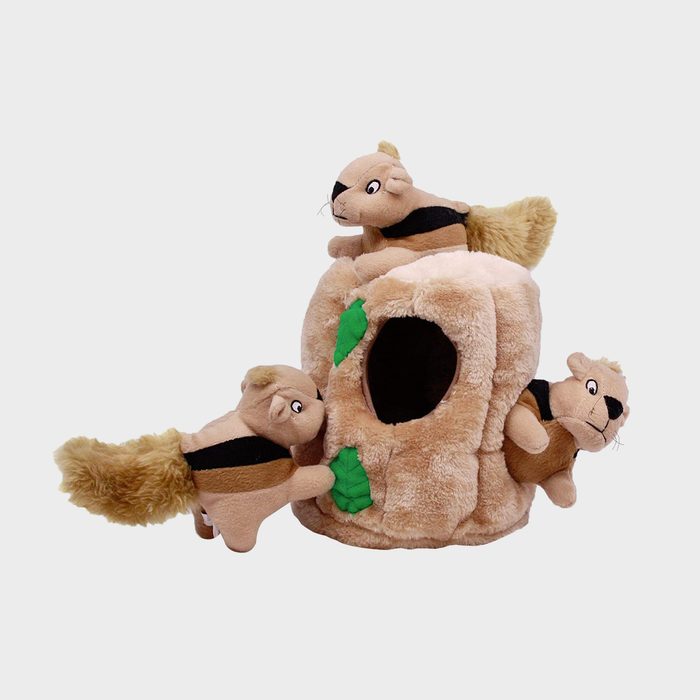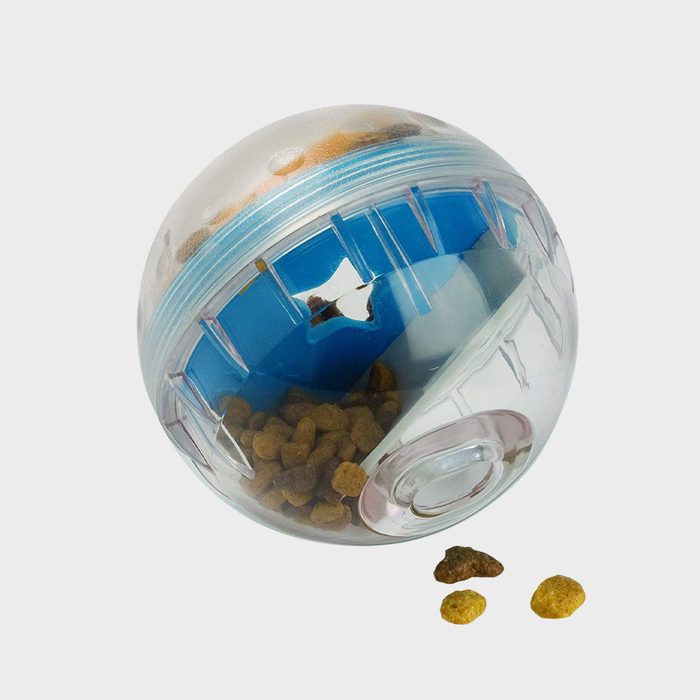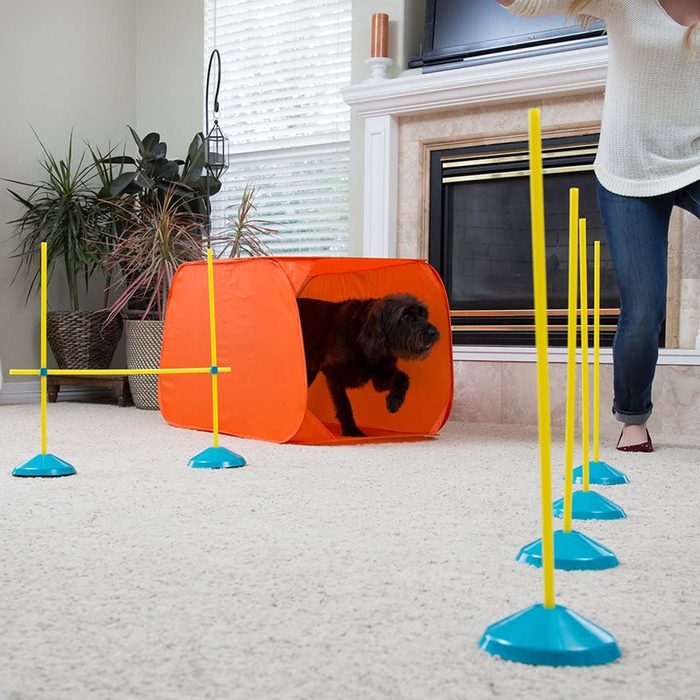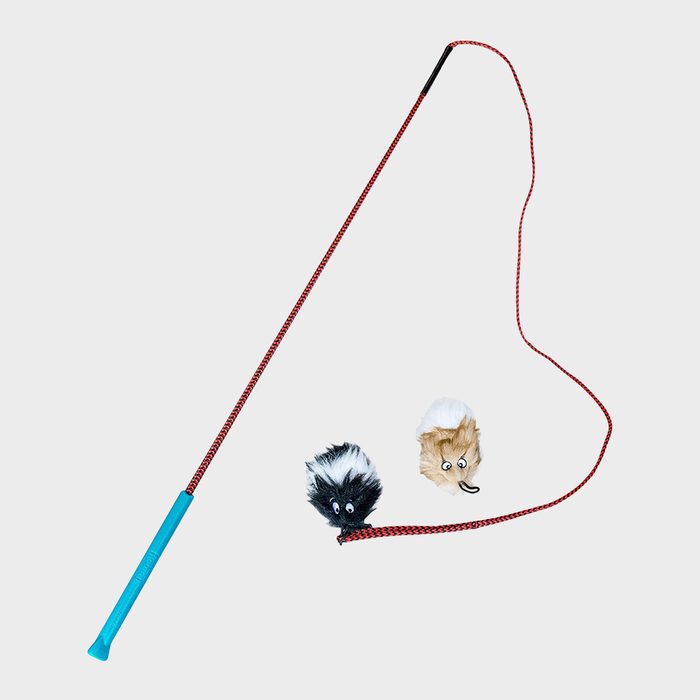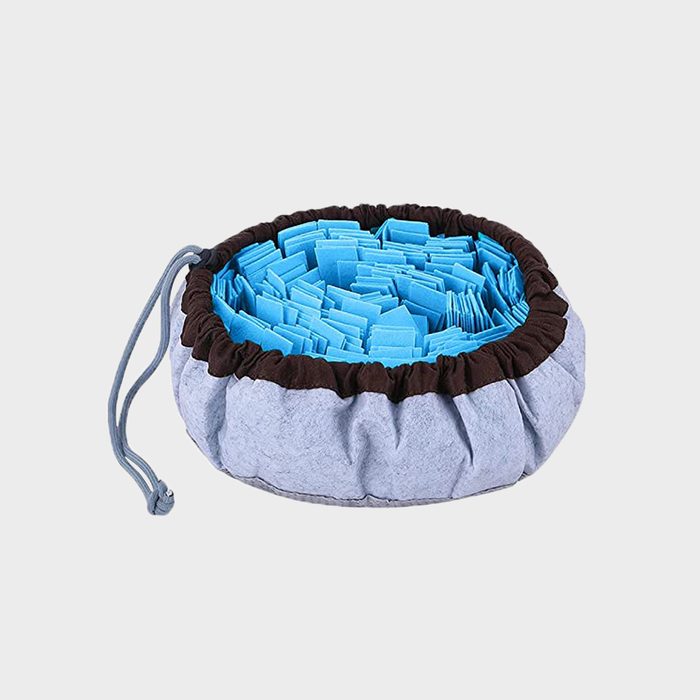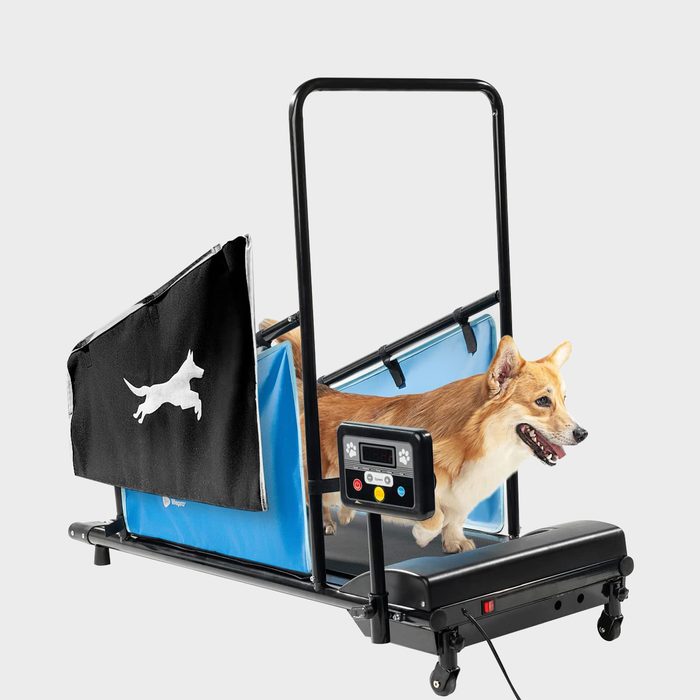via merchant
via merchant
Pros:
-
Takes the effort out of fetch
-
Five balls included
-
Optional timed launch settings: 5, 7 or 15 seconds
-
Multiple distance settings and remote-control operated
Cons:
-
Some reviewers complained sensor stops working due to ball slobber
Dogs who love to play fetch may pester you to death, and become frustrated and bored when you can’t accommodate them. Instead of playing a few half-hearted rounds, invest in the GoDogGo Fetch Machine for an automated never-ending supply of lobbed balls to fetch. Teach him to retrieve the ball and drop it back in the bucket, so the machine will toss again and again.
What to look for when buying brain games for dogs
Look for toys that engage your dog’s senses or require him to manipulate an object to get a reward. Interactive games include you and increase the bond you share. Solo toys burn off energy while you’re busy elsewhere. No laws ensure dog toys’ safety, so evaluate games based on your dog’s preferences, and then supervise play. When evaluating whether you should buy a brain game for your dog, here are some factors to consider.
- Design and function
- Skill level required
- Quality of materials
- Easily cleaned
- Cost
- Reader reviews and satisfaction
Why you should trust us
As a pet care expert and a dog owner myself, I’ve written about everything from the best indestructible dog toys to how to find the best dog diaper for your pup. My writing has won dozens of awards, and I’m the author of over 35 books in addition to thousands of articles on the subject of pets. I’m also a Certified Animal Behavior Consultant for both cats and dogs, and I started my career as a veterinary technician.
How we found the best brain games for dogs
Dogs (sadly) cannot write their own reviews, so to find the best canine brain games, we had to look to pet owners. After scouring the internet for positive customer reviews, retailer recommendations and popular bestsellers, we came up with the list of pup-approved brain games you see here. In our search, it was important to prioritize affordability, durability, cleaning and a range of skill-level options so that every dog has the chance to be entertained.
FAQs
How much mental stimulation does a dog need a day?
Every dog requires mental stimulation, but the amount varies. How much depends on your dog’s breed, age, and sometimes individual personality.
Puppies need less stimulation—no more than five minutes daily for each month they’ve lived. So a three-month-old pup benefits from 15 minutes a day, and a six-month-old thrives on 30 minutes daily (not necessarily all at once). Adult dogs can do well on more.
Active working breeds, like German Shepherds, need more than senior citizen dogs. Also, the brain game should suit your dog’s strengths. For example, scenting breeds like hunting dogs enjoy sniffing games, while your Papillon lap dog may excel at games needing more paw dexterity.
How do you mentally stimulate a dog?
Nearly anything works well for canine games that exercise the brain. Think in terms of your dog’s senses. While humans rely on sight, dogs focus on sounds and smells we can’t detect. Toys and games that prompt dogs to sniff something out or listen to clues to solve a puzzle get tails wagging. Dogs also mouth, taste and paw to explore their world, much as we use our hands.
Games don’t have to be expensive. You can also provide mental stimulation with cheap thrills—homemade toys and interactive training challenge dogs to think. Anything that demands extra thinking tires dogs out differently than physical exertion. That helps dogs settle, feel and act calmer, and enjoy spending time with the people they love.
How do I know if my dog needs mental stimulation?
Certain behaviors can signify that your dog is bored or needs mental stimulation, like excessive barking, chewing, destroying toys and digging.
Does sniffing mentally stimulate dogs?
For dogs, sniffing is an excellent exercise in mental stimulation, which is why snuffle mats are a popular brain game.





















